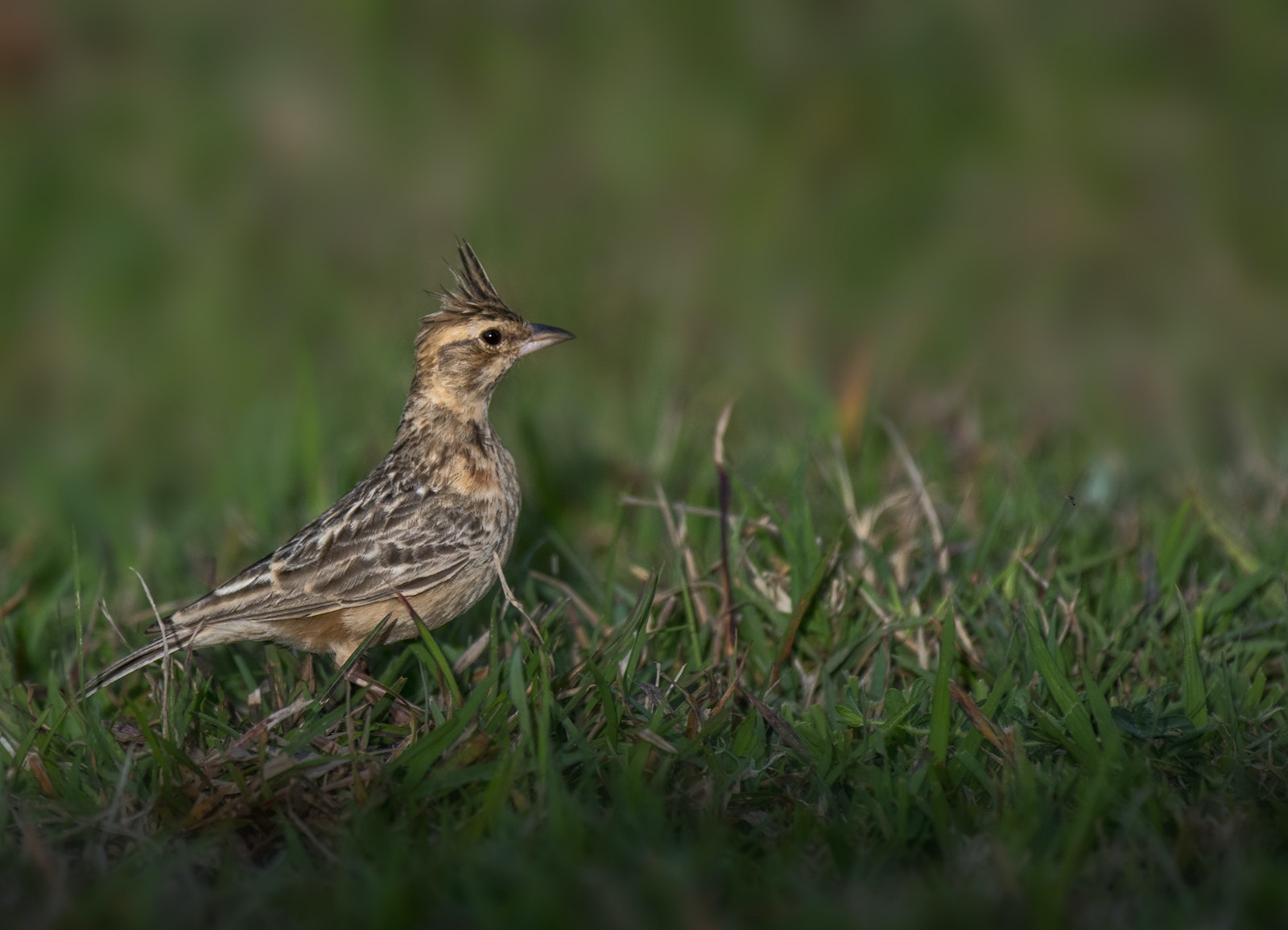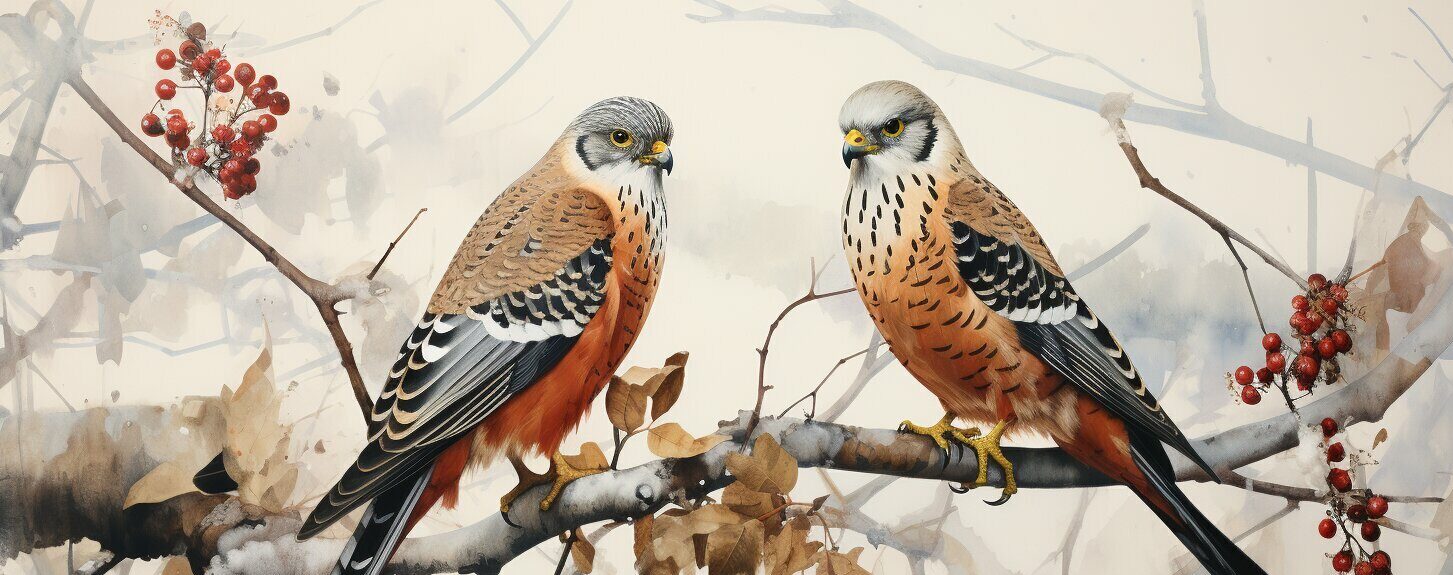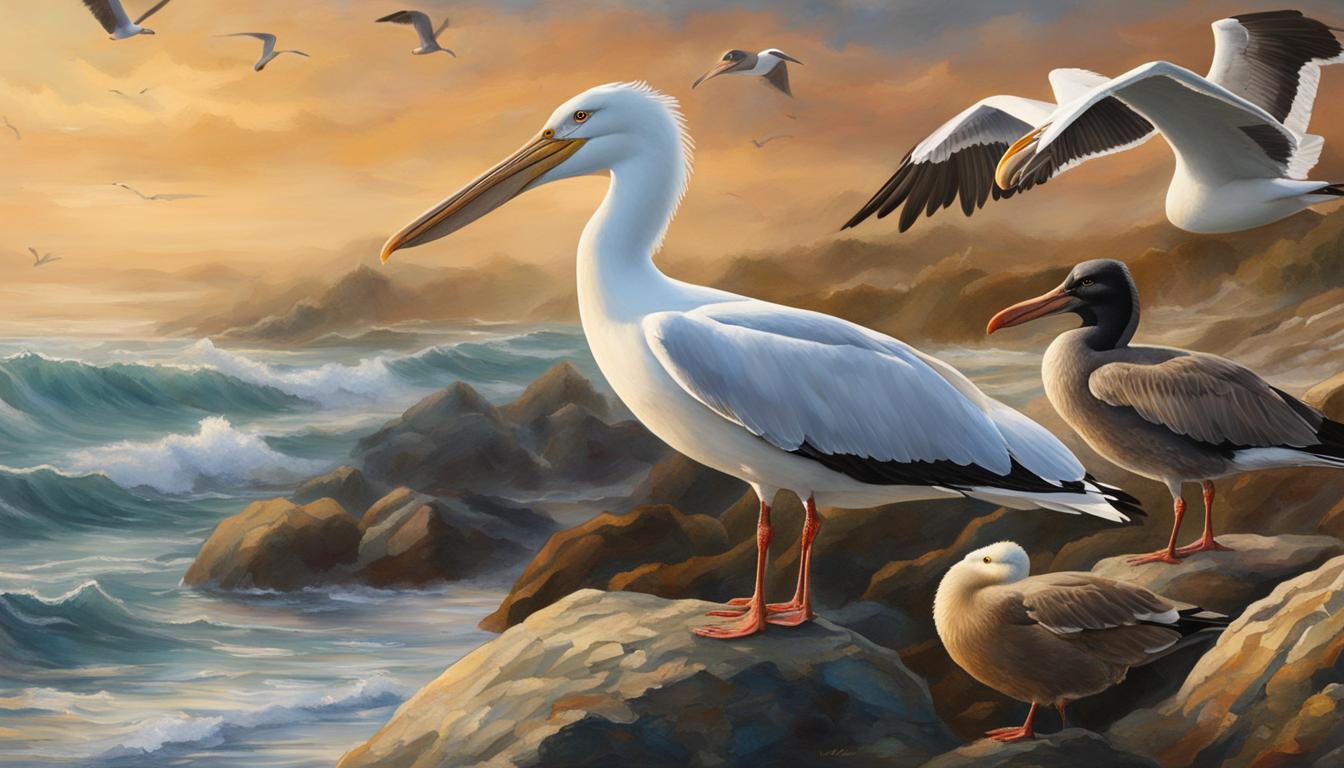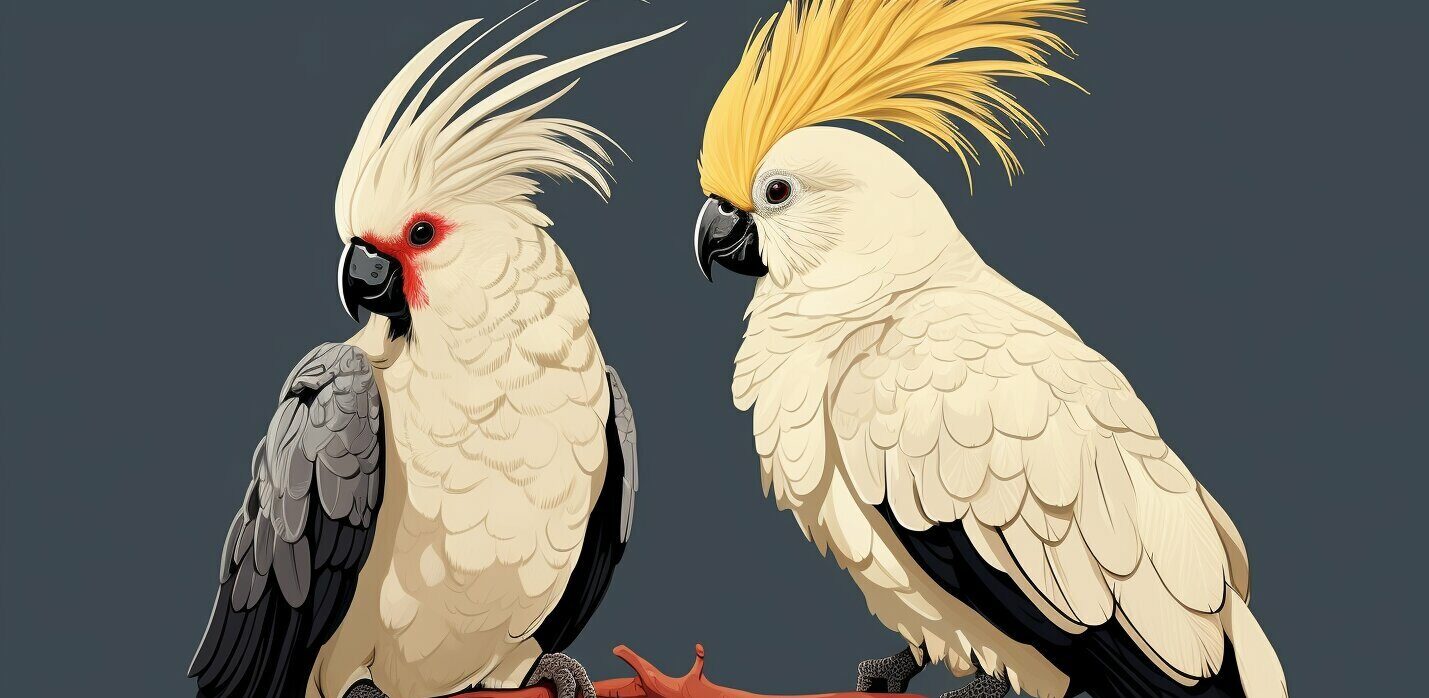An Introduction to the Feathered Songsters: Sparrows and Larks 101
Let’s take a moment to familiarize ourselves with our two main characters – the humble sparrow and the melodious lark. Sparrows, part of the Passeridae family, are robust, seed-eating birds with strong bills. They’re often small but what they lack in size, they make up for in social behavior.
These little chatterboxes are found all over the world, but mostly prefer close human company. Larks, on the other hand, hail from the Alaudidae family.
Unlike sparrows that prefer city life, larks enjoy more open environments like grasslands and desert regions across Europe and Asia. They’re recognized by their spiraling flight pattern accompanied by a cascade of song – making them quite a spectacle in bird world.
The World at Bird Eye Level: Why Ground Behavior Matters
Ground behavior might seem like an unusual topic when discussing avian species – after all, aren’t birds known for their prowess in air? While true to some extent, understanding ground behavior is crucial as it forms an important part of these creatures’ day-to-day lives.
From feeding to nesting and even certain odd grooming habits – much of what defines a bird doesn’t happen mid-flight but rather on terra firma. Insight into these activities can tell us a lot about how different species have adapted to survive in diverse habitats; from city streets teeming with people to isolated grassy plains.
Birds’ ground behavior can also serve as an indicator of environmental changes or threats such as predation or habitat loss. By studying these behaviors closely we not only enrich our knowledge about these fascinating creatures but also equip ourselves better to protect them.
The Artistry of Hopscotch: Sparrow Locomotion Unveiled
For anyone who’s spent a summer afternoon watching a sparrow, you’ve likely witnessed the delightful dance that is their hopscotch. Sparrows navigate the earth beneath them with a unique rhythm, hopping rather than walking. The beauty of this behavior lies not just in its charm but also in its practicality.
By hopping, sparrows can maneuver over uneven terrain and between dense vegetation with ease and speed. What’s more fascinating about sparrow locomotion is that this hop isn’t merely forward motion.
Sparrows have been observed to execute their leaps in all directions, showcasing agility and adaptability to whatever Mother Nature might throw in their path. So when you’re watching a sparrow leap, hop and bounce around your garden, remember – it’s as much about survival as it is about style.
A Gourmet Experience: The Gastronomy of Sparrows
When it comes to dining out—or rather, dining on the ground—sparrows are nothing short of proficient foragers. Their preferred method?
Scratching at the soil or grass with one foot while keeping the other planted firmly for balance. This scratching technique helps uncover hidden treats like seeds and insects waiting just below the surface.
But don’t mistake these little birds for mindless peckers; they are discerning eaters indeed! They use their tactile beaks to feel out food items—a quick nip here or there helps determine if something is edible or better left alone.
And when it comes time to drink? They’re not afraid to get innovative by sipping dew off leaves or even catching raindrops mid-flight!
Grounded Dreams: Unraveling Sparrow Nesting Habits
A surprising fact about sparrows is that they often choose to nest close to or at ground level—an unusual choice in the avian world, where high and safe often go hand in hand. Yet, sparrows have their reasons. Ground nesting allows for easy access to food sources and a quicker escape route from aerial predators.
But don’t think that ground nesting means lack of security. Sparrows are meticulous architects, constructing their nests in hidden spots like thick bushes or tall grasses.
They cleverly incorporate local materials into their nest design, using everything from twigs and leaves to man-made items like plastic strips or even discarded paper. These choices not only help camouflage the nest but also provide the right insulating properties to keep hatchlings warm and cozy in their earth-bound abode.
Lark Ground Behavior Uncovered
The Lark’s Walkabout: Exploring Lark Locomotion on Land
Now that we’ve introduced the bustling life of sparrows, it’s time to shift our gaze towards larks. Unlike their hop-happy counterparts, larks prefer a more grounded approach to movement – quite literally, in fact.
Instead of hopping, you’ll often see larks walking or running along the ground. This peculiar gait is not merely a quirk but is intrinsically linked to their feeding habits and habitat.
Larks have rather longer legs than most small birds, an adaptation purpose-built for terrestrial locomotion. These nimble creatures navigate grassy terrains with ease and agility that could put marathon runners to shame.
From an evolutionary perspective, this walking mechanism makes perfect sense as these birds predominantly dwell in open habitats such as grasslands and deserts where hopping isn’t necessarily the most efficient mode of transportation.
Grub’s Up! Lark Feeding Behavior Under The Microscope
A discussion about bird behavior would be incomplete without delving into their dietary preferences and feeding habits. To say that larks are ground feeders is only scratching the surface; they are true gastronomic explorers of their environment. The majority of species are omnivorous, relishing both plant material such as seeds and insects for protein. Their unique method of using their bills to dig into soil sets them apart from many other birds; it’s like watching a miniature avian version of archeologists at work! They deftly sift through soil debris with incredible accuracy earning them the nickname ‘ploughman bird’.
Low Homes, High Songs: Lark Nesting Habits Close To Earth
Nothing encapsulates the dichotomy in a lark’s character better than its nesting habits contrasted with its singing style. If you stumble upon a small, cup-shaped depression while on a countryside stroll, it’s likely a lark’s humble abode.
Larks build their nests directly on the ground or within short vegetation, cleverly camouflaged and often lined with grass or hair. This unassuming hideaway is where they lay their eggs and nurture their young.
It affords them excellent protection from predators while allowing quick access to abundant food sources nearby. However, when it comes to singing their melodious songs, larks ascend to incredible heights in the sky – hence the term ‘lark ascending’.
These ground-dwelling birds may live low but they truly sing high, with some larks known to go as high as 300 meters during their spellbinding aerial performances! This striking contrast between their terrestrial nesting habits and celestial choir practice beautifully encapsulates the intricate complexity of bird behavior.
Comparing and Contrasting Sparrow and Lark Ground Behaviors
Dance of the Earthbound: Differences in Movement Patterns
Now, let’s talk about how they move. Ever watched a sparrow hop its way along? Quite the charmer, isn’t it?
Sparrows have this peculiar habit of hopping on both feet when on the ground; it’s their signature footwork. Not just adorable but also efficient as they can easily change direction or height without taking to the air.
Larks, on the other hand, are more traditional walkers. They prefer to strut around with a rather dignified walk- each foot moving separately.
It seems less exciting than the sparrow’s hopscotch, but it is a deliberate strategy. This manner of movement gives them increased stability while navigating uneven terrain.
A Tale of Two Tables: Feeding Behaviors of Sparrows vs Larks
Feeding time is where we see some remarkable differences too. Sparrows are social eaters; they often share a meal together in small flocks.
Their beaks are designed for cracking seeds open – their primary food source – and they typically feed off plants or from bird feeders provided by indulgent humans. Meanwhile, larks keep their dining affairs much more personal as solitary feeders.
Their beak shape leans towards being omnivorous which allows them to enjoy an assorted diet that includes insects and grains primarily found on the ground surface or slightly below it. It’s an intimate meal enjoyed without too much camaraderie around.
The Nest Below: Contrasting Nest Building Strategies
Moving on to where these birds lay their eggs – home sweet home! Sparrows typically build nests low down in bushes or human-made structures using an array of materials like grass, feathers, and paper.
They favor nooks and cavities that offer protection from the elements and provide some level of security against predators. Larks, however, like to keep things on the down-low in a literal sense!
These artists of camouflage construct their nests directly on the ground within tall grass or crops. Meticulously woven with plant material and lined with fine grass or hair, larks’ nests are often dome-shaped with a side entrance – an architectural marvel that blends perfectly into its surroundings.
Unusual Ground Behaviors in Sparrows and Larks
As we delve into the intriguing world of avian behavior, it’s time we turn our gaze toward a few of the more peculiar ground behaviors exhibited by sparrows and larks. These quirks are not only fascinating but also provide us with insights into their survival strategies, which are as ingenious as they are bizarre.
Anting Antics Explained: When Birds Use Insects for Grooming!
In what can be best described as a plot straight out of a surreal silent movie, sparrows and larks sometimes engage in an activity known as ‘anting’. This involves deliberately allowing ants to crawl on their bodies!
Studies suggest this behavior is a form of grooming where the formic acid secreted from distressed ants acts as an insect repellent, offering protection against pesky parasites. Picture this – A sparrow fluffs up its feathers, opens its wings to its sides exposing its underparts.
Then it settles down atop an anthill or near some crawling ants. The scene that unfolds is nothing short of fabulous.
Ants swarm over the bird, and rather than freaking out, the bird stays still or moves around slowly to ensure even coverage! Far from being adversely affected by this ant-infested spectacle, sparrows and larks seem thoroughly nonplussed.
Dust Bathing Divas: Why Some Birds Love a Good Dirt Bath
If you thought birds were all about keeping their plumage pristine through frequent water baths, prepare to be mystified. Sparrows and larks sometimes forget all about their aquatic ablutions in favor of something far earthier – dust bathing!
You might stumble upon one such spectacle where these cute little birds seem to be having fits in the dirt but don’t be alarmed; they’re just enjoying their spa day. The mechanics of a dust bath are much like a water bath.
The bird finds a suitable patch of dry, loose soil or sand, plumps down into it, and starts to flutter its wings and wriggle its body. This action tosses up clouds of dust that settle on the bird’s body and seep into its feathers.
Dust bathing helps sparrows and larks maintain their plumage by soaking up excess oil, removing dead skin, dislodging parasites, and keeping their feathers well-conditioned. All in all, it’s a dusty diva moment that you must witness!
The Great Habitat Hustle: Tuning into the Effects of Environment on Ground Behavior
Just as we humans behave differently in a bustling city compared to a tranquil countryside, our feathered friends also adapt their behavior based on their surroundings. This aspect is particularly noticeable in the ground conduct of sparrows and larks.
For sparrows, urban environments provide an array of opportunities for scavenging. They’ve become opportunistic feeders, hopping about in public parks and pecking at discarded food items with reckless abandon.
Conversely, rural sparrows are more cautious, sticking to natural food sources while displaying a heightened vigilance against potential predators. Larks, on the other hand, prefer open landscapes.
Their classic walk-and-peck feeding style paired with their ground-based nesting habits make grasslands and farmlands an idyllic home. However, when these open spaces shrink due to human encroachment or environmental changes, larks are forced to adjust their routines – often with less-than-ideal results.
A Menu Shaped by Mother Nature: The Impact of Food Availability on Feeding Habits
Food – it’s the driving force behind many a bird’s behavior. For sparrows and larks alike, what’s available to eat can significantly influence how they interact with their terrain.
Sparrows are notorious for being dietary generalists; they can switch from seeds and grains to insects and human scraps depending upon what the smorgasbord of life presents them. In cities where people frequently feed birds or leave leftovers lying around – voila!
Sparrows have learned that there may be a free lunch after all! On a different feathered note are larks who primarily feast on insects found within the soil crust and vegetation layers where they dwell.
Here’s where it gets interesting: when insect populations dwindle due to changes in agriculture practices or pesticide use – as we’ve seen in many regions worldwide – larks may resort to eating seeds and plant matter. This dietary shift, while adjustable for some, can lead to nutritional deficiencies for others.
In both scenarios, it’s clear that food availability leaves an indelible mark on the dining and ground behaviors of sparrows and larks alike. Who knew avian ecology could serve up such an exciting menu of change?
Conclusion: Singing the Final Notes in the Dance of Sparrows and Larks
Heralding Back to Key Differences in the Ballet of Bird Behavior
In our entrancing journey through the ground behavior of sparrows and larks, we’ve unearthed a delightful myriad of differences between these avian acrobats. The signature sparrow hop-and-scratch method contrasts markedly with the more dignified walkabout strategy that larks employ.
This difference isn’t just an aesthetic one, it’s about survival; it affects how they search for food, evade predators, and navigate their surroundings. When it comes to feeding, both species have tailored their approach to best suit their dietary needs.
Sparrows peck and scratch at seeds on or just below the surface while larks display a flair for drama with their head-thrusting technique to probe for insects deeper in the soil. And while both species nest on terra firma, sparrows prefer tangled vegetation whereas larks opt for bare ground – a testament again to their adaptability.
Deciphering Avian Hieroglyphs: The Importance of Detail in Ornithology
You may ask why these minute details matter? In ornithology – as is often true in life – the devil is indeed in the details.
These small quirks are not mere eccentricities but are evolution’s elegant solutions to complex problems that these birds face daily. They shape each bird’s identity, ensuring its survival amidst changing landscapes and climates.
Understanding these nuances helps us appreciate not only how brilliantly diverse our feathered friends are but also how intricate and delicate nature’s balance can be. Any shifts in this equilibrium can ripple across ecosystems affecting not only individual species but entire habitats.
The Grand Finale: A Hopeful Encore
As we close this chapter on our exploration into sparrow and lark ground behavior, let’s not forget the role we play in their lives. Indeed, by learning about these fascinating creatures and sharing that knowledge, we can help in conserving their habitats and ensuring that future generations also get a chance to appreciate their unique ‘dance’ on the earth.
The dance of sparrows and larks – with its distinctive movements, feeding habits, and nesting strategies – is a symbol of nature’s extraordinarily vibrant ballet. By watching closely, we become not just spectators but also custodians of this magnificent spectacle.
Isn’t it wonderful to know our world is made richer by these small creatures who live out compelling dramas every day right under our feet? So here’s to many more years of chirping melodies filling the air as sparrows hop and larks strut; conducting their symphony on the grand stage that is Mother Earth.
 Skip to main content
Skip to main content


